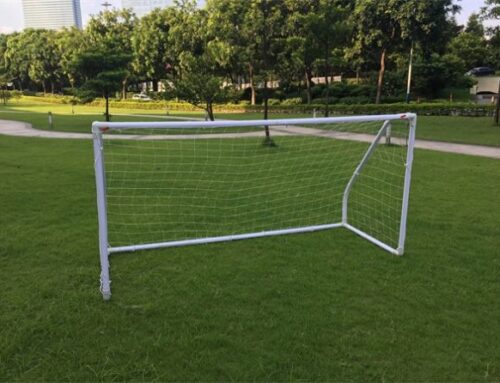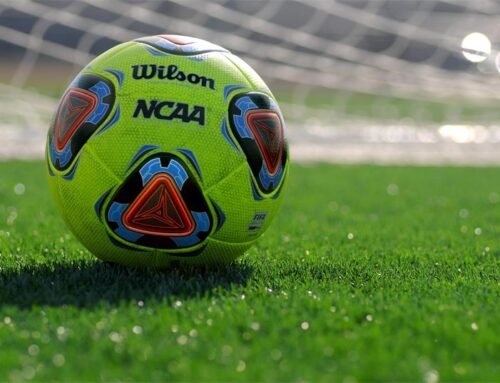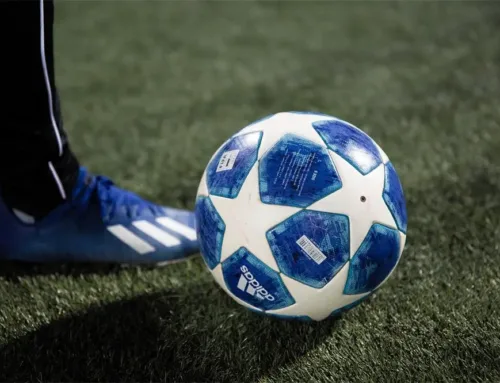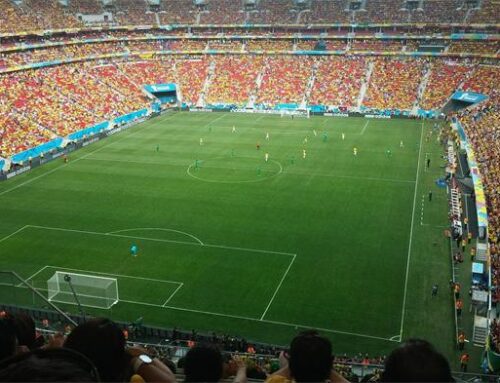Last Updated on December 14, 2023 by
Professional players excel in tight and confined spaces, especially. They also have excellent footwork. They have dedicated a lot of time to training, especially in their footwork, not because they have innate talent. Using good training drill plans and techniques can help us improve our soccer footwork quickly. Come along with me and let’s learn together.

Basics Soccer Training Drill
Juggling
When it comes to becoming familiar with the ball, juggling is one of the most effective methods. Juggling is often the first step in formal training for children.
Short Pass
Short passes are made with the instep and with the inside of the foot. In soccer, short passing is the most commonly used technique.
Long Pass
The term refers to passing over a long distance. Long passes require accuracy. A long pass should also have height because a low trajectory can be intercepted or disrupted by the opponent.
Ball control
It is the ability to stop an incoming ball within one’s control range and make the next move that makes ball control possible. The importance of ball control cannot be overstated. It is often the speed of ball control that determines the pace of the game, and good ball-stopping can lead to excellent attacking opportunities. It is also important to consider the method and body part used to control the ball.
Thigh Control
Control the force of the touch by lifting the thigh parallel to the ground. The force used for thigh control is generally greater than that used for foot control, which should facilitate the next move.
Chest control
Bring it in when it needs to be brought in; hold it out when it needs to be held out. Feelings are easier to express than words. You’ll get the hang of it with practice. While juggling, you can use your chest to push the ball up slightly closer to your body. Following chest control, the next foot control must be connected. Whenever possible, soccer ball control should be done with the feet.
Physical Training Drills
Running is the focus of physical training, preferably long-distance running. It is recommended to run 20 laps of a 400-meter track at a speed of no less than 2 minutes and 20 seconds per lap on a 400-meter track.
Strength Training Drills
There are three types of strength training: upper body strength, core strength, and lower body strength (thighs and calves):
Upper Body Strength Training:
8 push-ups per set, 5 sets; 6 pull-ups per set, 5 sets.
Core Strength Training:
Sit-ups with twists, 15 or 20 repetitions per set, 3 sets.
Thigh Strength Training:
Walk in a “duck walk” position with thighs parallel to the ground, 30 meters per set, 5 sets without resting in between.
Calf Strength Training:
Calf raises, with minimal thigh involvement, 30 meters per set, 5 sets without resting in between.
How to Implement a Soccer Training Drills Plan?
Ball control and technical exercises are best done in the morning.
6:00-6:20 Running,
6:25-7:00 Juggling practice
6:00-6:20 Running,
6:25-7:00 Accuracy practice (working on precision kicks)
6:00-6:30 Juggling,
6:30-7:00 Accuracy practice
6:00-6:20 Juggling,
6:25-7:00 Dribbling around cones practice
6:00-6:20 Dribbling with speed,
6:25-7:00 Juggling practice
You can schedule strength and physical training on the weekends according to your needs (preferably in the afternoon).
A strength training program can include dumbbells for strengthening the upper body, sit-ups for strengthening the core, and weighted sprints for strengthening the lower body. Exercises for strengthening: overhead presses, lateral raises, dumbbell raises (20 repetitions per day), and push-ups (20 repetitions).
Soccer Training Drills: Tips and Tricks
Juggling
Points to consider:
(1) Maintain a relaxed and coordinated body. To ensure stability and control, avoid excessive tension in the knees and keep the ankle joints stable.
(2) Keep moving while juggling, don’t stand still. Keep your balance and control the ball by taking small steps.
(3) Avoid tilting the toes downward or upward, as this causes the ball to move forward or backward, making it difficult to control.
Dribbling
Points to consider:
(1) Straight-line dribbling: Lower your center of gravity, tense the top of your foot, lift your foot slightly, and touch the ball behind it with the front part of your foot. Once you are familiar with the movement, you can control the force and increase the speed. Aim for one touch per step when touching the ball.
(2) Dribbling with the inside of the foot: Lower your center of gravity and use the area between the big toe and the arch of the foot to touch the ball sideways and slightly behind. Ideally, the ball should move diagonally forward, toward the supporting foot. You must master the force applied to the ball and the direction in which it moves. Increase the frequency of touches and speed up the movement gradually.
(3) Dribbling with the outside of the foot: Lower your center of gravity and use the area of your foot between the little toe, the fourth toe, and the middle toe to touch the ball on its side and slightly behind. As the ball moves forward, it should move diagonally toward the dribbling foot. Be aware of the force applied to the ball and the direction in which it moves. Increase the frequency of touches and speed up the movement gradually. Pay attention to the position of the supporting foot and increase the range of movement behind the ball when practicing alternating between the two feet.
Ball control
The ability to control the ball within your range of control and make the next move is the definition of ball control. The importance of ball control cannot be overstated. A good stop can lead to excellent attacking opportunities, and the speed at which you stop the ball often determines the pace of the game. For ball control, it is important to choose the right method and area.
Points to consider:
No matter what method of ball control is chosen, it consists of four main components:
(1) Observation and movement: Receiving effectively requires observing the incoming ball beforehand. Based on factors such as the ball’s trajectory, rotation, and speed, determine the landing spot quickly. Position yourself in an optimal location for ball control as soon as possible.
(2) Deciding where and how to control the ball: The purpose of ball control varies depending on the area and method used. It is therefore necessary to select the appropriate area and method based on the on-field situation and the next move.
(3) Adjusting the force of the incoming ball: You may need to apply additional force (cushioning effect) depending on the force of the incoming ball and the requirements of ball control. The desired angle of reflection can be achieved by adjusting the angle of incidence according to the direction of the incoming ball’s force and the actual requirements of receiving.
(4) Moving with the ball: As soon as you have controlled the ball, move closely with it, seamlessly transitioning to the next action. Ball control and ball handling should not be separated by a pause.
Ball control: The ball control area corresponds to the pass area. Touch the ball with appropriate force, and avoid abruptly stopping it. It should be easy to execute the next technical action with the ball control.
Shooting
Positioning your foot and ball correctly is crucial to effective shooting technique. Choosing the right shooting method at the right time increases your chances of scoring. The following types of shooting can be roughly divided by the area of foot contact with the ball: instep shot, instep drive, inside (outside) curve shot, and toe poke.
(1) Instep shot: Similar to passing with the instep, but with greater power and precision.
(2) Instep drive: Powerful shots are often executed with an Instep drive. Maximizing power and speed requires accurate foot placement. This technique is similar to instep passing, but the supporting leg’s position and the body’s balance are adjusted. It is important to maintain a good angle between the swinging leg and the supporting leg. Taking a shot while the ball is in motion requires anticipation.
(3) Inside (outside) curve shot: Also known as bending shot, this technique involves bending the ball’s trajectory. By using the curve, defenders and goalkeepers can be fooled, or defensive walls or players can be bypassed, resulting in the desired outcome. This technique does not require further explanation.
(4) Toe poke: This method is commonly used by people who aren’t proficient in soccer. It does, however, have its advantages. Toe pokes can be effective in close-range situations, especially in five-a-side games. The ball travels at a fast speed, making it difficult to predict the trajectory of the ball. Foot injuries can easily result from toe poking, so caution should be exercised to avoid injuries.
Soccer Training Drills Precautions
(1) Since soccer involves a lot of running, technical movements, and sweating, it is important to wear loose-fitting, breathable, and sweat-absorbent clothing. You should choose soccer shoes with non-slip soles that fit well.
(2) Don’t exercise in areas that lack adequate facilities. Injuries caused by uneven surfaces and debris (such as gravel on running tracks or sand pits) include ankle sprains, periosteal injuries, Achilles tendon strains, and more.
(3) Perform mild and low-intensity warm-up exercises before beginning any physical activity. As your heart rate and body temperature rise, gradually increase the intensity and speed of your exercises. Sports injuries can be prevented by improving muscle efficiency and joint lubrication.
(4) In addition to staying hydrated before and after exercise, soccer requires a significant amount of physical activity. Water should be consumed in small amounts multiple times rather than in large quantities all at once. Hydration can be improved by drinking lightly salted water.
(5) Engage in some post-activity movements after playing soccer to aid in recovery. A five- to ten-minute cool-down exercise helps gradually lower the heart rate. To relax the body, you can do activities such as jogging in place and static stretching.
Relaxation after Soccer Training Drills
After training, it is recommended to jog for 400 meters, followed by flexibility exercises. Relax your mind by taking deep breaths. When competing, after the 400-meter jog, engage in passing and juggling exercises with a partner, followed by flexibility and stretching exercises and deep breathing. Additionally, a sauna or massage can further aid relaxation after physical activity, particularly after a match.






Leave A Comment